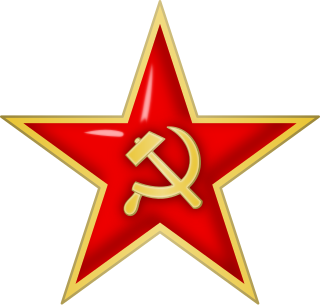| 349th Infantry Division | |
|---|---|
| Country | |
| Branch | Army |
| Type | Infantry |
| Size | Division |
| Engagements | World War II |
The 349th Infantry Division was a German military unit which fought during World War II.

Nazi Germany is the common English name for Germany between 1933 and 1945, when Adolf Hitler and his Nazi Party (NSDAP) controlled the country through a dictatorship. Under Hitler's rule, Germany was transformed into a totalitarian state that controlled nearly all aspects of life via the Gleichschaltung legal process. The official name of the state was Deutsches Reich until 1943 and Großdeutsches Reich from 1943 to 1945. Nazi Germany is also known as the Third Reich, meaning "Third Realm" or "Third Empire", the first two being the Holy Roman Empire (800–1806) and the German Empire (1871–1918). The Nazi regime ended after the Allies defeated Germany in May 1945, ending World War II in Europe.

World War II, also known as the Second World War, was a global war that lasted from 1939 to 1945. The vast majority of the world's countries—including all the great powers—eventually formed two opposing military alliances: the Allies and the Axis. A state of total war emerged, directly involving more than 100 million people from over 30 countries. The major participants threw their entire economic, industrial, and scientific capabilities behind the war effort, blurring the distinction between civilian and military resources. World War II was the deadliest conflict in human history, marked by 50 to 85 million fatalities, most of whom were civilians in the Soviet Union and China. It included massacres, the genocide of the Holocaust, strategic bombing, premeditated death from starvation and disease, and the only use of nuclear weapons in war.
The division was originally formed on 25 November 1943 in Wehrkreis I (East Prussia), and fought mostly on the Eastern Front, being effectively destroyed near Zolochiv by the Soviet Army's Lvov-Sandomierz Offensive.

East Prussia was a province of the Kingdom of Prussia from 1773 to 1829 and again from 1878 ; following World War I it formed part of the Weimar Republic's Free State of Prussia, until 1945. Its capital city was Königsberg. East Prussia was the main part of the region of Prussia along the southeastern Baltic Coast.

The Eastern Front of World War II was a theatre of conflict between the European Axis powers and co-belligerent Finland against the Soviet Union (U.S.S.R.), Poland and other Allies, which encompassed Central Europe, Eastern Europe, Northeast Europe (Baltics), and Southeast Europe (Balkans) from 22 June 1941 to 9 May 1945. It has been known as the Great Patriotic War in the former Soviet Union and modern Russia, while in Germany it was called the Eastern Front, or the German-Soviet War by outside parties.

Zolochiv is a small city of district significance in Lviv Oblast of Ukraine, the administrative center of Zolochiv Raion. The city is located 60 kilometers east of Lviv along highway
The division was reformed in September 1944 to the Volksgrenadier standard, being listed as commanded by Major-General Karl Koetz. During the East Prussian Offensive in January 1945, it was encircled in the Heiligenbeil pocket near Mehlsack and destroyed.

A division is a large military unit or formation, usually consisting of between 10,000 and 20,000 soldiers. Infantry divisions during the World Wars ranged between 8,000 and 30,000 in nominal strength.

Volksgrenadier was the name given to a type of German Army division formed in the Autumn of 1944 after the double loss of Army Group Center to the Soviets in Operation Bagration and the Fifth Panzer Army to the Allies in Normandy. The name itself was intended to build morale, appealing at once to nationalism (Volk) and Germany's older military traditions (Grenadier). Germany formed 78 VGDs during the war. Volksgrenadier divisions were professional military formations with effective weapons and equipment, unlike the unrelated Volkssturm militia.
Karl Koetz was a general in the Wehrmacht of Nazi Germany during World War II. He was a recipient of the Knight's Cross of the Iron Cross with Oak Leaves.
| This German World War II article is a stub. You can help Wikipedia by expanding it. |




